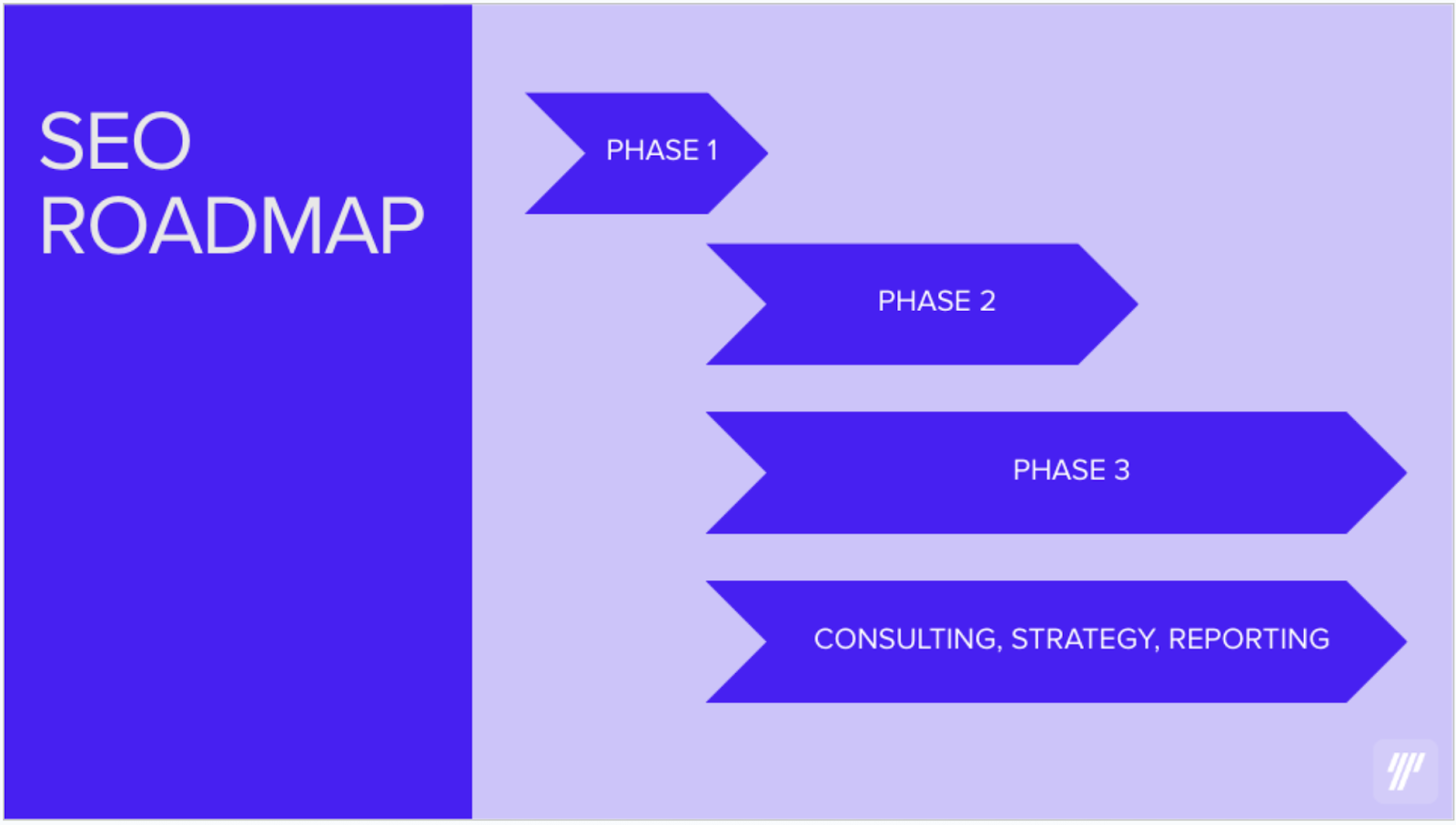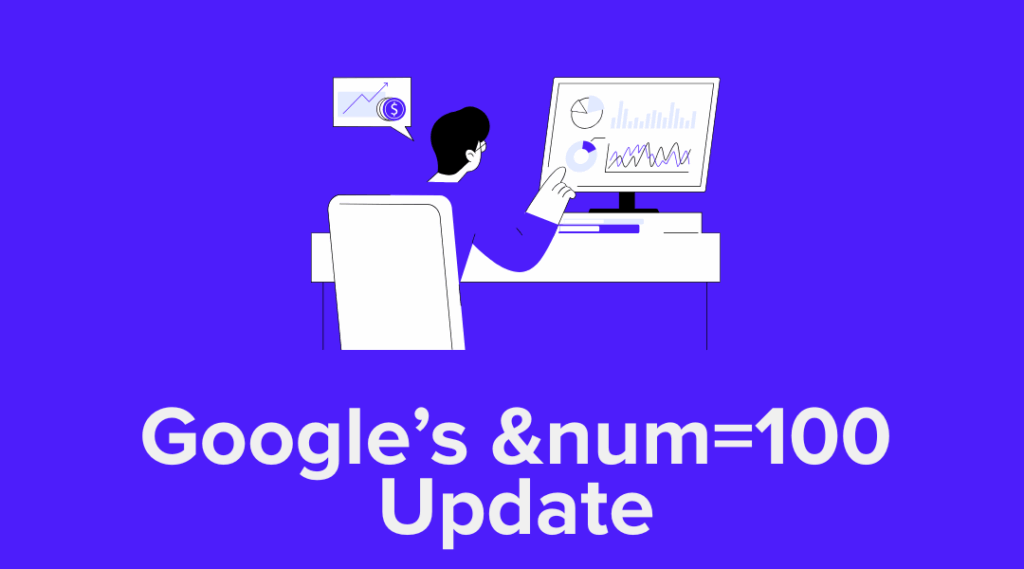Summary:
SEO is a long-term investment with long-term value. It takes time to implement SEO best practices, and it also takes time for search engines to rank it. The more good SEO you invest in your site—content, links, technical fixes—the faster your rankings climb, impressions stack up, clicks increase, and conversions follow.
If you’re reading this post, the odds are that you’re in one of two camps. One: you’re looking at your initial SEO efforts, wondering when you’re finally going to see traffic bloom. Or, two: you know that SEO is key to driving users to your business, but before you begin you need to know what to expect over the next… 3 months? 2 years? Whether you’re hearing crickets around your recently optimized website or evaluating the resources needed to begin, this roadmap will provide you with the information you need to move forward confidently.
What can SEO do for your business?
Let’s talk about what it means for SEO to be “working.” If you’re thinking SEO grows traffic, you would be right. But while blanket efforts to optimize your site will likely get more people in the door, your business needs SEO to do more than attract a broad audience who may or may not be interested in the products or services you offer.
Good SEO grows the right kind of traffic: a relevant audience. With the right content in the right places, your site will be able to draw in users who are potential clients or customers. “Working” SEO drives conversions.
How long does SEO take to grow your traffic?
SEO can take anywhere from 3-6 months to show changes in your website’s traffic. The initial signs of your growth will be small, but trust that SEO is a compounding return. The more good SEO you invest in your site—content, links, technical fixes—the faster your rankings climb, impressions stack up, clicks increase, and conversions follow.
7 factors that influence your SEO performance
While SEO takes some time to work for any website, you can expect certain factors to influence how fast it yields notable results. “How long does SEO take?” gets more or less the same answer from any SEO expert: “It depends.” These seven factors are why we have to give such a vague answer: your site’s age, authority, competition, content depth, backlinks, technical health, and available resources.
1. Website age
The age of your website can be a hit-or-miss factor depending on your previous activity. Google prioritizes tenured sites that have maintained quality content through the years; but if your website has been around since the dawn of the internet and doesn’t have any quality content history, it’s just old. You need to prove that you deserve to hold a space in order for age to be a positive factor.
Age can also be a disadvantage if your site has a bad history with Google. If you’ve tried to manipulate search results through black hat techniques, you need to do some cleaning up before you can earn back Google’s trust. Otherwise, you risk being penalized by a manual action shutting down your rankings.
The rate of growth for a site without tenure depends on the strength and execution of its SEO strategy. Take Stix Golf: they jumped in immediately with a killer combo of great marketing and investment in paid advertisement, but that could only get them so far in a heavily dominated market. Through high-quality content, on-page SEO, and off-page SEO, their site scaled from 100k organic visits yearly to pulling over 1 million organic visits a year. Read full case study →
Read: How to Integrate SEO with Paid, Social, Email Marketing →
2. Authority score
The authority score of your website, found on third party tools like SEMrush, is an artificial metric based on rankings and link philosophy (the backlinks you receive from other websites). The rate of clicks coming in can accelerate differently depending on your website authority.
A high-authority website with well-established SEO and regular posting can see its content rank as quickly as two weeks, and news sites and mega companies can rank almost instantly. Alternatively, if you have a brand new website that wants to command the worldwide web on a topic in the first month, Google’s going to pump your brakes. Focus on building authority through quality and relevance over time.
A lower authority score does not doom ranking efforts; we’ve seen lower authority score websites rank above higher authorities for competitive keywords when their content was better researched and more creatively presented. While your authority score does give you an idea of your website’s overall performance and potential to compete, entity understanding is becoming more important and effective as a principle to focus on. If you’re honing in on your niche and doing it well, time will show your efforts. With a couple years of investment in creating high-quality content, your website could easily leapfrog competitors you didn’t think would be possible.
3. Competition
Some industries are inherently more competitive than others. If your business is one of few who do what you do (and post about it), you’re likely going to find it easier to rank because of the lack of competition. If your field is highly competitive, you’ll need to get more creative with your SEO strategy.
For example, if you’re a mom-and-pop hardware store competing against Home Depot, you’ll want to focus your energy on long-tail search queries like “paint brush vs. roller for doors.” Aiming for broad terms like “paint” will waste your time and resources trying to compete with businesses that are household names when your site is simply not at a comparable level.
The key to your success is to find your niche with winnable keywords first, and then to expand steadily into that corner until you own it.
4. Content depth
Content depth is key when it comes to building authority in your niche. To develop the depth of your content, you have to prove you know more than the Top 10 Perennial Plants for Your Spring Garden. You’re also providing accurate and helpful information resources for choosing between kinds of mulch, attracting pollinators, and picking plants that survive in the cold. The longer and more thoroughly you establish your website as the authority on all aspects of your topic area, the more Google will tip its hat to your content.
Preparing great content is just the first step—the next is following a consistent schedule of publishing. Posting every once and a while at an irregular cadence is not a good signal to search engines and does not help position yourself as an expert with a loyal following. To rank consistently, you need to post well-researched content at a regular cadence. We’ve found that two posts per month works well for brands with low-medium domain authority, giving enough time to produce quality, in-depth articles. You only have so many resources, and funneling your efforts into two ranking posts per month is a better use of time than 10 mediocre posts per month that stagnate.
Here are some tips:
- Focus on centering your content on solutions for your users’ needs.
- Build an appreciation for the service or product you provide by sharing what makes you special.
- Explain the ins and outs of your field without being hypersensitive about the secret sauce of your company—the more you share, the more trust you’ll build with your users.
Learn more: What is E-E-A-T and Why It Matters?
5. Backlinks
Backlinks (links to your site from another site) act like trust signals that tell Google other websites vouch for your content. Quality content will naturally attract backlinks. The more backlinks you have, the more reasons Google has to trust your content and recommend your site to users. Proactive outreach can also build backlinks, but focus on genuine value, not spammy requests. If it sticks, you could find yourself receiving the natural outflow of keyword-rich posts that are already getting great traffic.
6. Technical SEO
If your site has technical issues, Google may struggle to crawl and rank your pages. Thankfully, with modern CMSs like Shopify, it’s now harder to develop a site with serious technical issues. However, inexperienced web developers, unreliable hosting services, and complicated backend labyrinths can cause huge performance problems that will affect your Google rankings. Broken links, 404s, and orphan pages are examples of technical breakdowns that can dock your short-term and long-term performance. Your website should be crawlable, indexable, and easy to navigate.
7. Budget & resources
Determination can get you pretty far, even if you don’t have a lot of resources at your disposal. That said, it can’t be denied that time, talent, and tools matter. If a large brand bursts onto result pages relevant to your brand with fresh content, a lot of money to invest, and unmatched expertise and time to devote toward optimization, you're going to get outranked pretty rapidly. Regardless, your best chance for success is to know your audience and write content that speaks directly to their needs. If you don’t know your audience, you won't be successful with SEO no matter how much money you invest into your site.
SEO timeline: the tiptop approach to strategic optimization

Because SEO results vary by website, we like to think of SEO strategy as performing through multiple phases, especially since strategies you start in the first few months will continue. These three phases—research and planning, website and LP strategy, and content and off-page SEO—give our clients a helpful roadmap of what to expect when optimization begins.
Phase 1: Research and planning
The first month of SEO strategy is dense with auditing. We want to work through your website with a fine tooth comb, evaluating and planning improvements to site speed, architecture, UX, navigation hierarchy, existing content and performance, and other factors that contribute to the foundation of your SEO strategy.
The first month is also the beginning of content roadmapping and solution, collection, and landing page planning. If we don’t set you up for success beginning with your website, any posting efforts later will be significantly stunted by Google’s preference for clean websites and good UX.
Another aspect of this phase is competitive analysis. You need to know what your lane looks like and how you’re going to find your niche. As we become familiar with your field’s online landscape, we can begin to research and collect target keywords that will direct coming work on content. As soon as we have a solid group of primary and secondary keywords, we can begin to plan a content calendar to tackle.
Phase 2: Website and LP strategy
The next two months should be consumed with starting to post content and optimizing your website based on the research we gathered during the first month’s audit. We’ll be optimizing your existing collection, product, and landing pages while creating new pages that fill in any holes, effectively giving your on-page SEO a head-to-toe makeover.
Of course, significant website issues can’t all be fixed immediately. As we discover the strengths and weaknesses of your website during this time, we may also find potential for longer term improvements to the site structure or even a site migration. During our ongoing SEO efforts, we’ll periodically audit the functions of your website to anticipate any issues so you continue to build your growing business on a strong foundation.
Phase 3: Content and off-page SEO
Up to now, we’ve been auditing, optimizing existing copy, posting quality content, and improving your website’s UX and other features. Over the next year, it’s time to build on that foundation by continuing to develop your content strategy, posting quality and user-focused posts about twice a month, creating an internal link strategy, and developing your off-page SEO through product seeding. After your content marinates, you’ll start to see improved rankings, rising branded searches, and increasing impressions.
About a year into SEO strategy, you’ll gain real traction by ranking for long-tail keywords, seeing significant traffic increases, experiencing growing conversions, and naturally developing a stronger backlink profile.
Moving forward: strategy, consulting, and reporting
While SEO provides lasting effects, it’s not a set-it-and-forget-it game. New competitors, algorithm changes, and shifting business goals means it needs regular monitoring. If you decide to enlist an SEO agency to help you manage this process, you can expect to receive regular recommendations and ongoing support. Our clients receive access to a custom reporting dashboard, monthly reports, strategy syncs, and continuous optimization to ensure they get the best results.
Is SEO worth the wait?
SEO is a long-term investment with long-term value. It takes time to implement SEO best practices, and it also takes time for search engines to rank it. But that time is very well spent when it brings you a lasting audience with real conversions.
If you’re ready to see results online, let’s talk. You're creating something meaningful and lasting when you build your SEO, and that investment has a compounding interest for years to come. We’re in it for the long haul.
You might also like:





